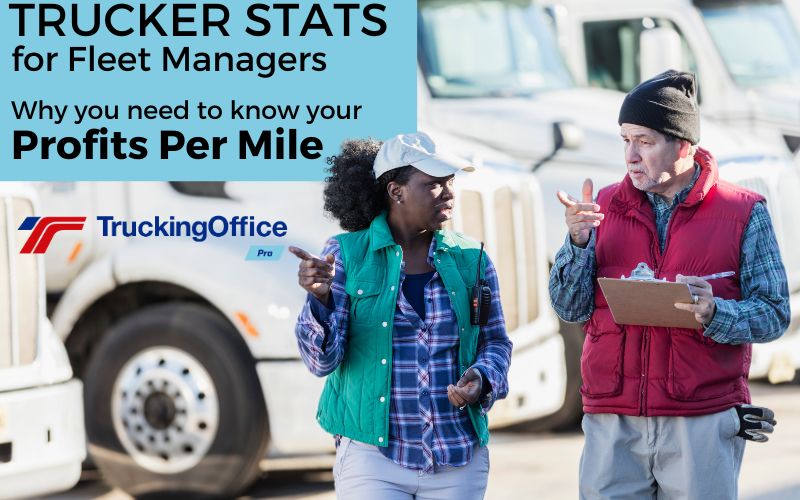When managing a fleet of trucks, knowing trucker stats for each driver and each vehicle sounds hard to do. So hard, in fact, that you might not want to take the time to figure out who’s making you money and what unit is costing your profits to keep on the road. The trucker stat profit per mile is a great way to compare apples to apples.
What are we comparing?
When you have t a fleet, you may need to be flexible in how equipment is assigned to truckers. Undoubtedly, there are drivers who have the licenses and experience in driving certain types of trailers. The expenses for different loads depend on a huge variety of variables
- cost of fuel
- permits
- tolls
- lumpers
- refrigerant
- equipment
- tools.
That’s not even close to the whole list.
How do you compare the profits made from a local load that required a flatbed with special permits to a load that’s going across the US in a refrigerated trailer? Revenue per mile – how much the shipper pays per mile – will not compare until expenses per mile for the load are figured out.
It’s complicated.
Trucker Stats Show Profits Per Mile
Revenue per load is how we see brokers offer loads. The price per mile and total price per load are the numbers we see on load boards. It’s critical to know what our expenses per mile are so we don’t take loads at a loss.
Do you want to pay to haul someone’s freight? I didn’t think so.
There are times to take low-paying loads to avoid deadheading. Maybe to get home or to get to a load that’s worth the trip – then we take lower rates per mile. Anyone who’s driven a load to Florida knows how hard it is to get a good load out.
So if revenue per load isn’t a good metric, what is? Profit per mile might look like we’re going deep into the weeds of analysis. If we weren’t using a computer, how would we ever figure this number? Would we even bother?
We would bother if we wanted to know where we make the most money.
Trucker Stats Tell the Truth
Profit per mile takes the revenue per mile and subtracts the expenses per mile. These stats are all computed by TruckingOffice PRO to help you discover the truth about your trucking business.
- Is it more profitable to take 5 local loads per week or to take a load across the country at a lower rate?
- Do you make more money by staying in-state?
- Does one driver cost more than another driver?
- Is the investment in another trailer worth the money based on the loads currently available?
What feels like a good thing and what is objectively provable may be different things. That’s why trucker stats such as profit per mile are numbers than any fleet builder or manager needs to know.
Where do you get these numbers?
TruckingOffice PRO will provide a report with these numbers for you. You don’t have to try to figure out your trucker stats. TruckingOffice PRO takes your dispatch and billing as well as your expenses into the calculation. Wouldn’t that make knowing your most profitable loads easy?
You can try TruckingOffice PRO and discover what you can learn from a single data entry. You enter the data one time and then TruckingOffice PRO uses and reuses those numbers. No data reentry needed! Think about all the time you can save and all the information you’ll get without any extra work on your part.
Give TruckingOffice PRO a try today by signing up for your free trial of the software. You’ll find out that running your trucking fleet is far simpler with a complete trucking business software that covers
- dispatches and routings
- business accounting
- maintenance scheduling and records
- business reports
- IFTA and IRP tax computation.
Give TruckingOffice a test drive today!







Recent Comments